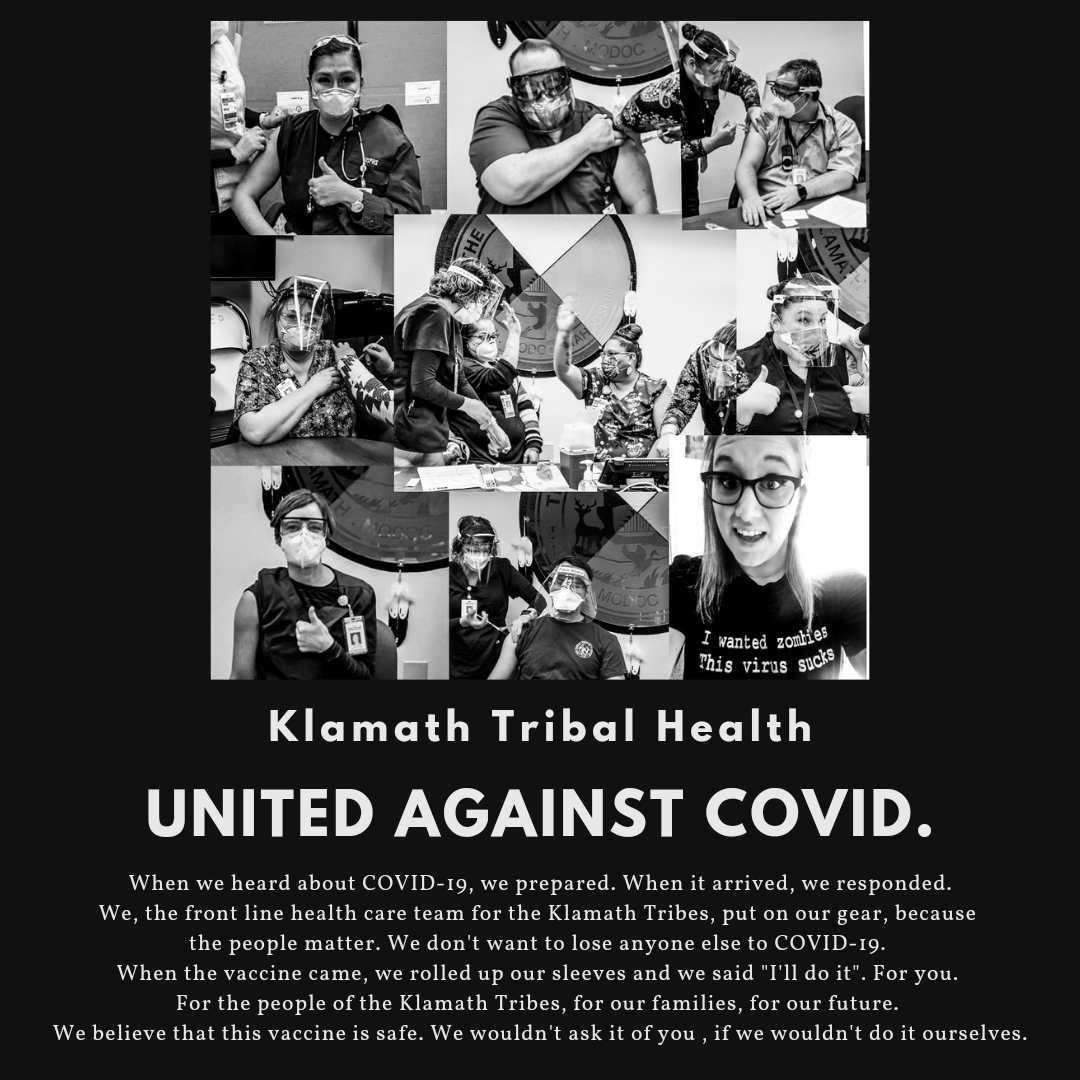FEMA Reservist and Creative Services Manager Joe Castel is deployed to support COVID-19 response efforts. Castel shares how the Klamath Tribal Health and Family Services in Oregon is making a difference in the fight against COVID-19.
The Klamath Tribal Health and Family Services in Klamath Falls, Oregon, received its first shipment of COVID-19 vaccines from the State of Oregon in late December, around the same time the tribe suffered its first COVID-19 death.
This fatality was a warning to act quickly to stop the pandemic from taking any more tribal members. Misty Wadzeck, nurse supervisor for Klamath Tribal Health and Family Services, estimated there are more than 2,500 high-risk tribal members out of 5000 tribal members, 500 of whom have multiple risk factors.
Front line workers at the health center were given the opportunity to get vaccinated first. Then those 65 years of age and older with underlying conditions were selected to receive the vaccine.
When the staff made outreach calls to their patients to let them know vaccines were available, Wadzeck stated that they encountered hesitancy from many elders about receiving the vaccine. “We heard a lot of concerns that the vaccine was manufactured too fast and that there was going to be long-term side effects that hadn't been determined yet, because it was a brand-new vaccine,” recalled Wadzeck.
“And then we also heard some of the big myths that have been all over the media, like ‘This is going to change my DNA.’ ‘This will give me COVID.’ ‘This has microchips in it.’ We heard a lot of things like that,” said Wadzeck.
In order to counter the misinformation , Wadzeck and her team launched a pro-vaccine campaign through social media and also sent emails with critical information to their patients, including their partner organizations. The messaging focused on myths vs. facts to help clear up the misinformation.
One of Wadzeck’s first strategies for combating the misinformation was coming up with numerous phrases to grab tribal members’ attention on social media. They also adopted the name “Vaccine Warriors” to describe their health team’s mission.

One post included a colorful and stylized eye-catching graphic with a cartoon android declaring, “No, the COIVD-19 Vaccine doesn't have microchips!” Then it lists what the vaccine is made up of, “mRNA lipids and other ingredients for stability)”.
The tribal elders biggest concern was, “‘Hey, we're not going to be a test for this.’"
“So, one of the best things we could show is that we believed in the vaccine and that the tribal members weren't being used as guinea pigs,” said Wadzeck.
They made sure that all the healthcare providers that were recommending the vaccine had also been vaccinated. “We took pictures of ourselves getting the vaccine and wrote stories about our experiences with it, including any unpleasant side effects,” explained Wadzeck. “When I had a fever of 103 after my vaccine, I was honest about it. And I said, ‘I promised you that I would be honest. Here it is.’”
Another issue the clinic staff encountered from elder patients is that they weren’t going to take the vaccination if their non-tribal spouses couldn’t. The clinic then opened up their vaccination program to non-tribal spouses.
As a sovereign nation, the Klamath Tribes are not obligated to follow Oregon’s specific vaccine rollout phases. The Klamath Tribes’ ability to establish a vaccination distribution plan that addresses the needs of the tribe and of its members was critical given the increased risk Native people have of contracting COVID-19 and experiencing more severe cases.
To date, more than 3,000 doses have been administered. The health center still provides 100 to 200 vaccinations weekly, with once a month 200-vaccintion clinics, and will continue until everyone who wants a vaccine is fully vaccinated. “I do believe that receiving the vaccine from the state has been very beneficial in our roll out, they have been great partners with us, and meeting our needs for our population and our strategic initiatives,” said Wadzeck.
The tribe now has opened vaccine eligibility to tribal members 18 years and older. Wadzeck revealed that the tribe’s younger generation has taken the opportunity to get vaccinated.
“A world without COVID,” is what Wadzeck said she dreams of, it’s been her affirmation throughout the process and part of her savvy vaccination campaign to bring her fellow tribal members into the clinic to defeat COVID, one shot in the arm at a time.
Follow FEMA Region 10 on Twitter, LinkedIn and the COVID-19 photo and video library for the latest updates. Visit FEMA's Vaccine Support page for more information on how FEMA is supporting vaccine distribution.


